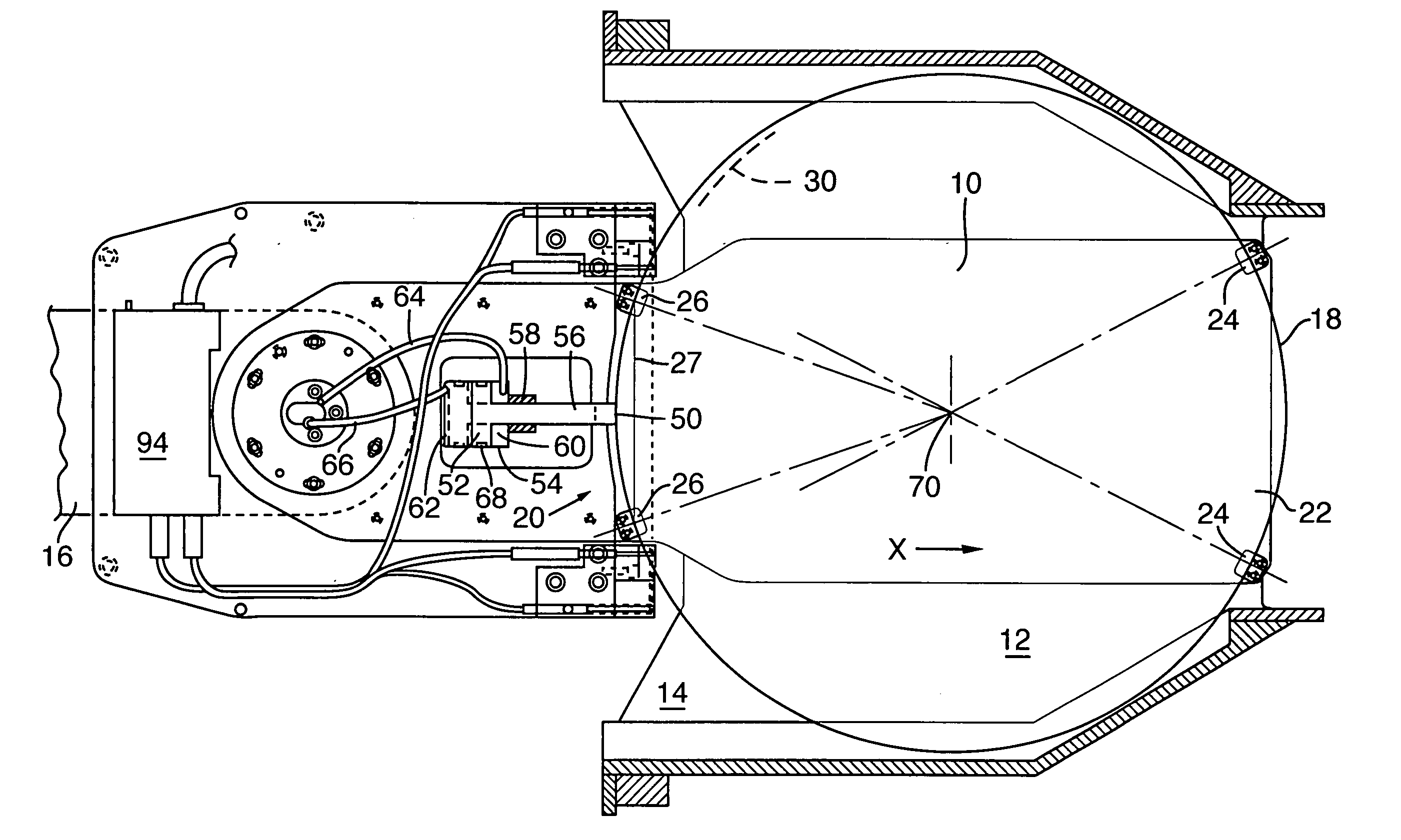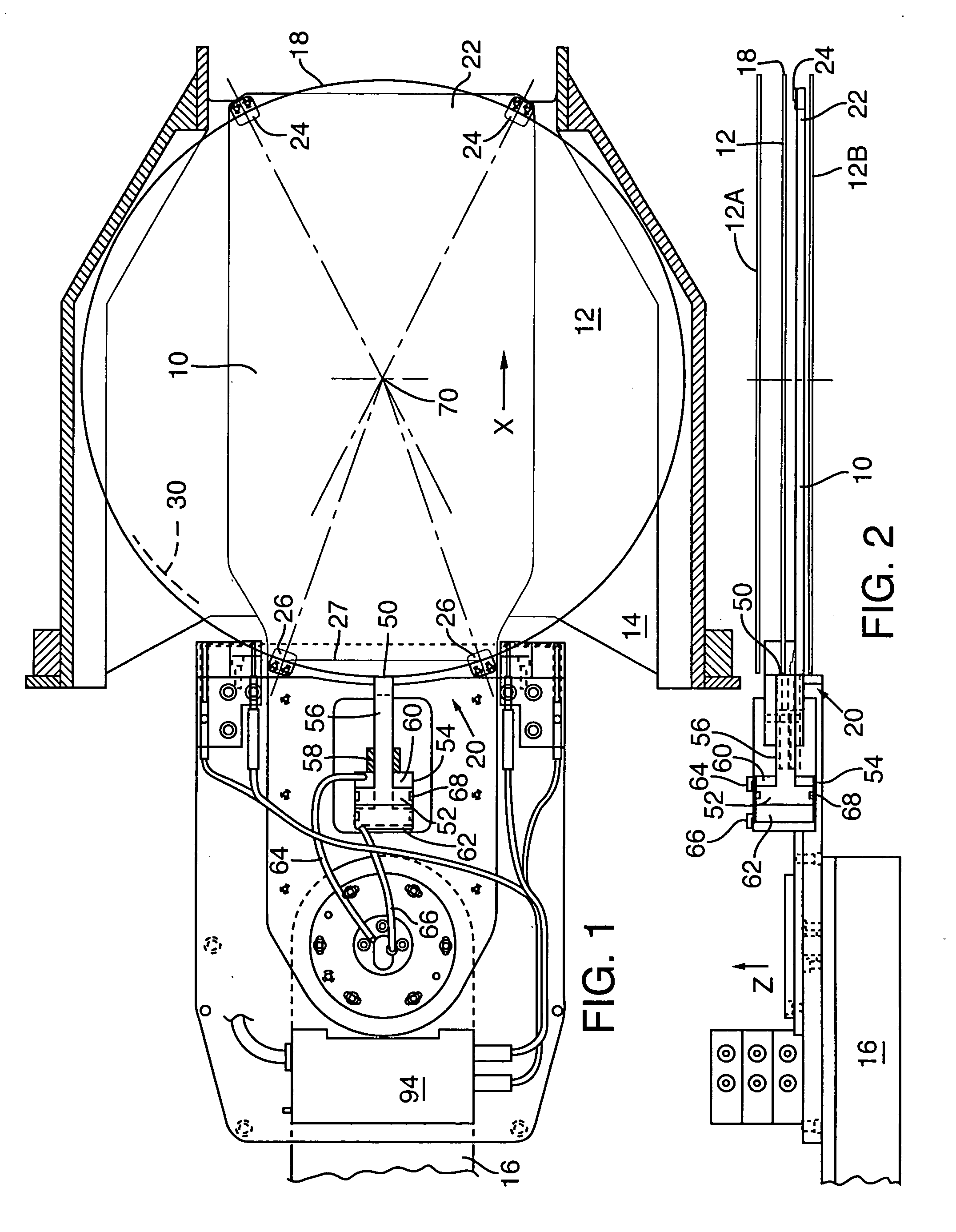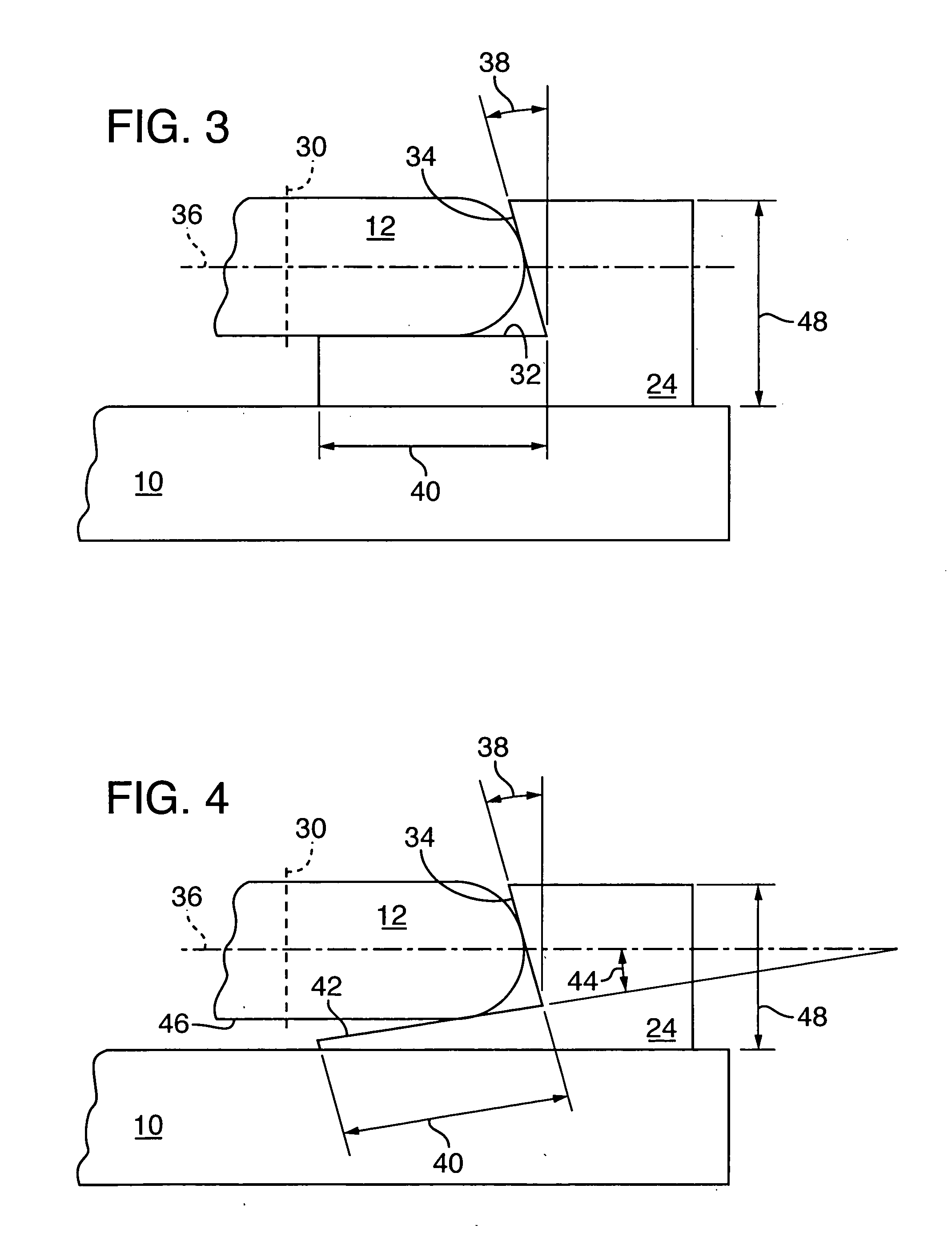Method of determining axial alignment of the centroid of an edge gripping end effector and the center of a specimen gripped by it
a technology of axial alignment and specimen, which is applied in the field of specimen handling apparatus and method, can solve the problems of scratching on contamination of the other wafers, and damage to the backside of the wafer, so as to reduce the damage of specimens and reduce the production of contaminan
- Summary
- Abstract
- Description
- Claims
- Application Information
AI Technical Summary
Benefits of technology
Problems solved by technology
Method used
Image
Examples
first embodiment
[0034]FIGS. 1 and 2 show a spatula-shaped end effector 10 of this invention for transferring semiconductor wafers, such as a wafer 12 (shown transparent to reveal underlying structures), to and from a wafer cassette 14. End effector 10 is adapted to receive and securely hold wafer 12 and transfer it to and from cassette 14 for processing. FIG. 2 shows that end effector 10 is particularly adapted for retrieving and replacing wafer 12 from among closely spaced wafers, such as wafers 12, 12A, and 12B, which are shown as they might be stacked in slots 13 of wafer cassette 14, or from a lowermost slot 13 of wafer cassette 14. Wafers having diameters of less than 150 mm are typically spaced apart at a 4.76 mm ( 3 / 16 inch) pitch distance; 200 mm diameter wafers are typically spaced apart at a 6.35 mm (¼ inch) pitch distance; and 300 mm wafers are typically spaced apart at a 10 mm (0.394 inch) pitch distance.
[0035] End effector 10 is operably attached to a robot arm 16 (a portion of which i...
second embodiment
[0068]FIGS. 7 and 8 show a spatula-shaped end effector 110 of this invention for transferring semiconductor wafers, such as wafer 12 (shown transparent to reveal underlying structures), to and from wafer cassette 14 (not shown in this view). End effector 110 is similar to end effector 10 but is further adapted to sense the bottom surface of a wafer stored in wafer cassette 14 without protruding into the cassette. FIG. 8 shows that end effector 110 is particularly adapted for retrieving and replacing wafer 12 from among closely spaced apart wafers, such as wafers 12, 12A, and 12B, which are shown as they might be stacked in wafer cassette 14.
[0069] End effector 110 is operably attached to robot arm 16. In general, end effector 110 senses the bottom surface of wafer 12 before entering wafer cassette 14 to retrieve wafer 12 from between wafers 12A and 12B. End effector 110 is then finely positioned by robot arm 16 and actuated to grip periphery 18 of wafer 12, remove wafer 12 from cass...
third embodiment
[0103]FIGS. 12, 13, and 14 show a preferred fork-shaped end effector 210 of this invention for transferring semiconductor wafers, such as wafer 12 (shown transparent to reveal underlying structures), to and from wafer cassette 14 (not shown in these views). End effector 210 is similar to end effectors 10 and 110 but further includes a position sensing active contact point actuating mechanism 212, and deletes the proximal end edge and elevation sensors. Rather, end effector 210 employs distal end sensors 214 to accomplish various wafer sensing measurements. Distal end sensors 214 are implemented similarly to the elevation sensor generating light transmission pathway 202 as shown in FIGS. 7 and 10.
[0104]FIG. 13 shows that end effector 210 is particularly suited for retrieving and replacing wafer 12 from among closely spaced apart wafers, such as wafers 12, 12A, and 12B, which are shown as they might be stacked in wafer cassette 14.
[0105]FIG. 14 shows end effector 210 operably coupled...
PUM
 Login to View More
Login to View More Abstract
Description
Claims
Application Information
 Login to View More
Login to View More - R&D
- Intellectual Property
- Life Sciences
- Materials
- Tech Scout
- Unparalleled Data Quality
- Higher Quality Content
- 60% Fewer Hallucinations
Browse by: Latest US Patents, China's latest patents, Technical Efficacy Thesaurus, Application Domain, Technology Topic, Popular Technical Reports.
© 2025 PatSnap. All rights reserved.Legal|Privacy policy|Modern Slavery Act Transparency Statement|Sitemap|About US| Contact US: help@patsnap.com



